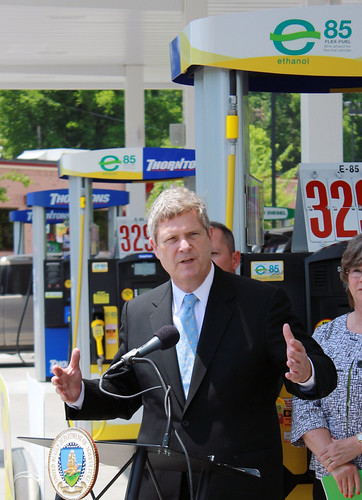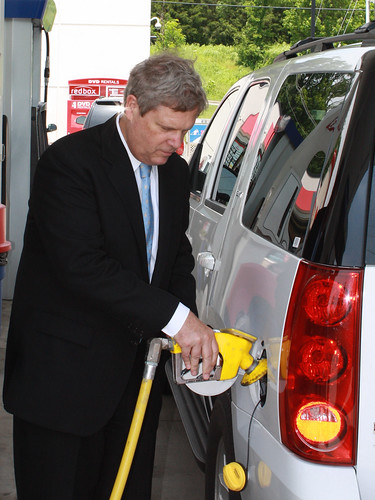
Secretary Tom Vilsack recently joined a Round Table of regional stakeholders in Nashville to discuss ways that USDA can help rural fuel station owners and cooperatives increase the availability and use of flex-fuels. About eight million cars and trucks on the road in the U.S. today can use E85 fuel, but finding a station that can dispense renewable fuels can be a challenge.
Round Table participants agreed that increasing demand is the key. But, they acknowledged the chicken/egg challenge of matching local demand with availability.
During a news conference at a local Thornton’s fuel station earlier in the day Secretary Vilsack drove home the point that consumers are taking advantage of the less expensive fuel where it is available. The Kentucky-based company is rapidly expanding the number of flex-fuel pumps available at its stations across the Midwest and South because, "Flex-fuel is better for the environment, reduces our dependence on foreign oil and when customers see the lower price, they take advantage of it," said Vice President of Operations Tony Harris.

The Secretary told the Round Table participants that USDA is using its Rural Energy for America Program (REAP) to help meet the Obama Administration's goal of increasing the supply and convenience of renewable fuels by having 10,000 flexible fuel pumps nationwide within five years. The initiative can cover up to 25 percent of the cost of buying and installing pumps capable of dispensing more than one mix of gasoline or diesel with ethanol.
The Round Table included Rural Development Tennessee State Director Bobby Goode, Tennessee Energy Programs Coordinator Will Dodson, Clean Cities Coalition Executive Director Atha Comisky, Memphis-based Ag BioWorks' Dr. Stephen Bares, Lipscomb University Sustainability Institute's Dodd Galbreach, Genera Energy's Louis Buck, along with state economic development, agriculture and transportation staff.
"Helping businesses install flex-fuel pumps helps reduce American dependence on foreign oil, creates local jobs, and promotes the development of domestically produced, renewable energy," Vilsack said. "The easier it is to find these fuels at local service stations, the more consumers will use them."
The deadline to apply for funding through the Rural Energy for America Program is rapidly approaching. For more information, click here.
